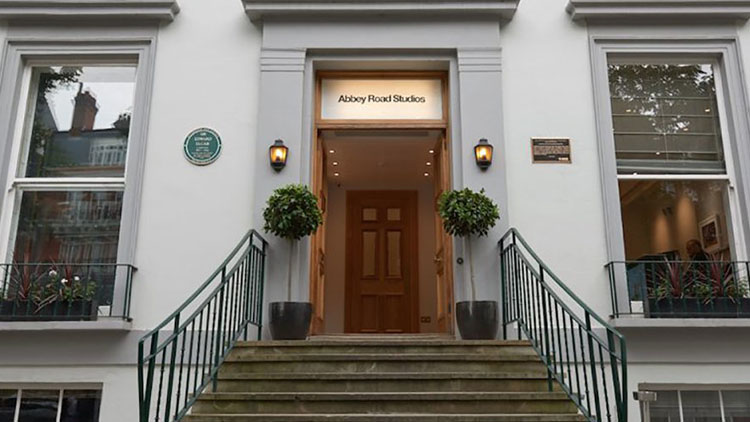Waves Audio is releasing a brand new product today! We know this plugin will be a game changer in the pro audio industry. The Waves Abbey Road Studio 3 plugin is the next generation of Waves Nx technology and brings the acoustic environment of the famous Abbey Road Studio 3 control room right into your studio. With this plugin, you know you can always trust the production and mixing decisions you are making! We are actually at Abbey Road Studios right now, and in honour of this new release, we want to share with you the incredible history of the studio and the legends that have produced here!
History of Abbey Road Studios
Abbey Road Studios is the most famous recording studio in the world and has become an icon in the music industry. The building was originally a nine-bedroom home that was built in 1829, which had been converted into flats, until it was purchased by the Gramophone Company in 1928. The Gramophone Company then turned the historical building into the world’s first purpose-built recording studio. This location was chosen for the new studio because it was far enough away from the noise and vibrations of traffic and trains, but still close enough to the performance venues of the time. On November 12, 1931, the studios officially opened and were named EMI Studios, as The Gramophone Company had merged with Columbia Graphophone Company to form Electric and Musical Industries (EMI).
Over nearly a century of operation, the studios have become famous for innovation in recording technology, primarily developed by the Record Engineering Development Department, who responded to the needs of the artists and producers using the rooms. Notable producers and sound engineers include George Martin, Geoff Emerick, Ken Scott, Alan Parsons, Mike Stone, Ken Townsend, and many more. While originally intended for classical recordings, the studio soon embraced jazz and big bands, and the first British rock and roll records of the 1950s, including Sir Cliff Richard’s first single “Move It”. The expertise available at Abbey Road Studios ranges from direct to vinyl recording to half-speed mastering. No matter what an artist’s needs are, they can be sure all of their needs will be met at Abbey Road.
Abbey Road is most notable as the site of the innovative recording techniques adopted in the 1960’s by The Beatles, Pink Floyd, the Hollies, and more. In fact, The Beatles recorded 190 of their 210 songs at the studio. Since The Beatles’ rise to fame, Abbey Road has become very closely associated with the band, and was actually only renamed “Abbey Road Studios” after The Beatles’ 1969 album Abbey Road was released and made the studio famous.
As the demand for classical recording spaces declined, Ken Townsend moved toward using the studios for film score production. The first score to be produced at the Abbey Road Studio was the musical score for Raiders of the Lost Ark in 1980. Following this, famous scores that have been produced at the studio include the scores for all three instalments of the Lord of the Rings trilogy, the Harry Potter series, and the award winning Shape of Water.
Abbey Road Studios has hosted multitudes of artists over the years, from legends like The Beatles and Pink Floyd, to more recent stars like Radiohead, Amy Winehouse, Sam Smith, Florence + the Machine, Ed Sheeran, Frank Ocean, Lady Gaga, and Adele. The studio is constantly working to remain the top studio, and in 2017, two new contemporary studios were launched – The Gatehouse and The Front Room – making Abbey Road accessible to a whole new generation of artists. Artists that have already taken advantage of these new facilities include Jess Glynne, George Ezra, and James Bay.
In 2010, Abbey Road was declared an English Heritage Grade II site, as was the zebra crossing in front of the building where The Beatles shot the album cover for their 1969 Abbey Road album. Even though there is a rich history at Abbey Road Studios, they do not focus on the past. They are always focused on the future and want to help share the massive amount of expertise and knowledge that is present within the building to prepare the next generation of musicians, engineers, and producers to carry on the work of the famous Abbey Road Studios.
